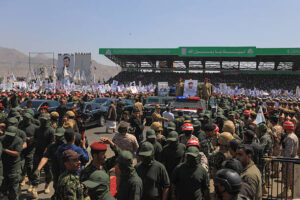Israel’s widespread airstrikes in Iran on Saturday crippled Iran’s ability to produce long-range ballistic missiles in a blow that will be hard and time-consuming to recover from, and rendered crucial energy facilities vulnerable to future attacks by destroying air defense batteries protecting them, according to multiple reports citing Israeli, American and Iranian officials, as well as satellite images analyzed by experts.
The strikes, which Israel’s Kan public broadcaster said reflected capabilities developed over two decades, indicated much greater freedom of operation for Israeli warplanes in striking Iran if the current conflict continues to escalate, as well as a setback in Tehran’s ability to continuously fire missiles at the Jewish state, which Jerusalem apparently hopes will serve as a deterrent against further attacks on the Jewish state.
The strikes targeted sites that reportedly include the secretive Parchin base near Tehran, which was used in the past for research and development of nuclear weapons, as well as a factory that manufactures drones.
The attacks on the air defenses caused “deep alarm” in Iran, The New York Times reported citing three unnamed Iranian officials — one from the country’s oil ministry — since it rendered defenseless Khuzestan Province’s Abadan oil refinery, Bandar Imam Khomeini petrochemical complex and an adjacent major port, as well as the Tange Bijar gas field in the Ilam Province.
In addition, the report said citing the Iranian officials and three Israeli officials, the strikes disabled three Russian-made S-300 air-defense systems at Tehran’s Imam Khomeini International Airport and at the Malad missile base near the capital. This is in addition to a strike in April that took out an additional battery in the Isfahan Province.




